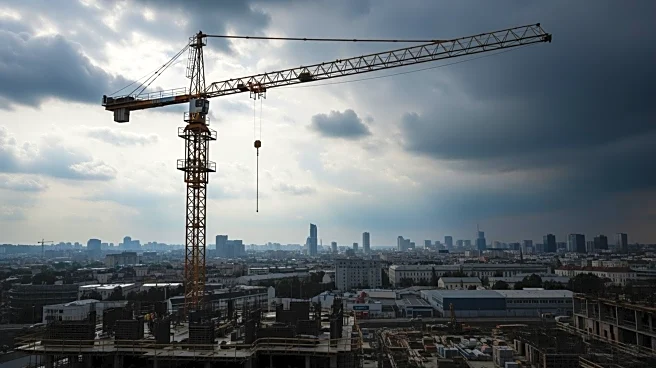What's Happening?
The construction industry is grappling with the effects of stagflation, characterized by stagnant growth and persistent inflation. This economic condition is creating a challenging environment for construction firms,
as demand is suppressed by weak growth while costs remain high due to supply-side pressures. The private residential sector is particularly affected, with high interest rates and regulatory delays impacting viability. Despite these challenges, industry experts suggest that firms can build resilience by adopting disciplined forecasting, stress-testing budgets, and maintaining open dialogue with clients.
Why It's Important?
Stagflation presents a unique challenge for the construction industry, as it removes the usual counterbalance of lower costs during economic downturns. This situation can lead to increased insolvency risks for firms operating on tight margins. The industry's response to stagflation will be crucial in determining its ability to withstand economic pressures and maintain stability. Firms that focus on transparency, collaboration, and realistic planning may be better positioned to navigate these challenges and emerge stronger when conditions improve.
What's Next?
The construction industry is expected to face continued challenges in the coming months, influenced by the Autumn Budget and the industry's response to stagflation. Firms that prioritize risk management, data-driven decision-making, and long-term resilience will be better equipped to handle the economic pressures. The industry may also explore new models for distributing risk more evenly, moving away from large fixed-price commitments.
Beyond the Headlines
Stagflation in the construction industry highlights broader economic disparities and the need for strategic planning to address regional resource allocation. The situation underscores the importance of early engagement and clarity in project assumptions to prevent disputes and maintain confidence in the supply chain.














